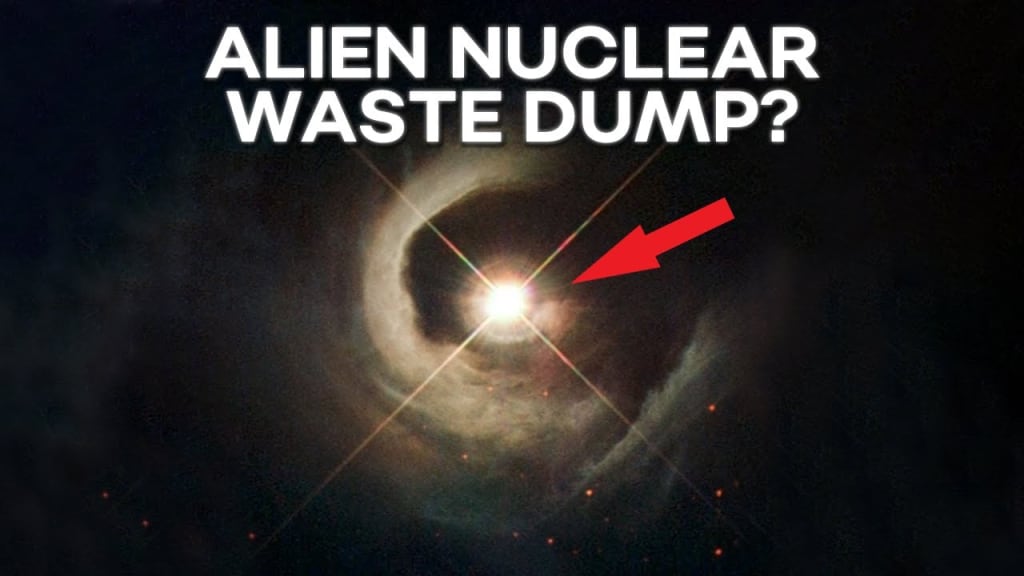PRZYBYLSKI STAR
THE MYSTERY OF PRZYBYLSKI STAR

THE PRZYBYLSKI STAR MYSTERY
The przybylski star, which is 365 light years from Earth and weighs four times the mass of the sun, is one of the three stars in the centaur constellation. Regular stars are similar to thermonuclear engines, which synthesize heavier elements inside their nuclei. However, the przybylski star produces elements that aren't typically found in stars or elements that haven't been discovered yet. In this video, you will learn what makes the przybylski star so unique and whether there are any elements that we haven't found yet Is there any scientific explanation for the mystery of Czebilski's star, or are there signs of extraterrestrial civilizations? Could extraterrestrial civilizations have exploited this star as a nuclear waste disposal site? Join our channel to watch all of our videos and the upcoming episodes even sooner! hd101065, also known as the Chabilski star, appears to contain a lot of plutonium along with other extremely heavy elements that are also extremely unstable and short-lived. These elements shouldn't be there, and their existence can be explained by one of these possibilities. First, some things that we didn't anticipate finding in nature are there. Secondly, postulating do you know what makes this item so special? Its extremely unique spectrum. Either the existence of ultra-heavy elements was an error from the start, or third, aliens made artificial elements and threw them into this star. Let's find out which one it is. The star spectrum, which shows the elements a star contains, is one of the strangest things anyone have ever seen, according to everyone who has seen it. The researchers' biggest challenge was not being able to obtain complete information about the amount of elements it includes. Some scientists claim that there are an unlimited number of lines, which makes them difficult to examine in depth. How can this be the case? Since the 1960s, scientists have been examining the Czebilski star however, scientists still don't know what elements it contains. One theory speculates that this could be because it contains elements and isotopes that have never been found in nature. The data was collected using a technique that links the elements in a star's light to the type of light it emits. The findings led scientists to realize that their earlier conclusions about the contents of HD101065 were contradicted.First, the spectrum shows that it has nearly no iron, which is quite unusual on its own. Most stars survive by fusing lighter and heavier atoms, and these fusions frequently produce iron or other metals. Second, according to multiple studies, this star has been around for a long enough time to have produced a large number of heavy elements. It also contains atoms that shouldn't be there, such as promethium and plutonium atoms, which are elements with relatively short half-lives. Finally, this star is rich in lanthanides and even heavier elements like holmium and europium, which are present in lesser quantities in common stars.For example, promethium has a half-life of fewer than 20 years, meaning that it takes half of its atoms to disintegrate. With plutonium's maximum half-life of only 24,000 years, which is a very short time for a star, those elements ought to have entirely decayed by the time humans evolved and learned how to use telescopes if they weren't being replenished or formed new compositions. There are currently a number of plausible reasons. Although there isn't much evidence to back up astronomers' speculations that these atoms could have formed as a result of a supernova or current reactions sparked by a nearby neutron star, there may be another explanation that has nothing to do with these the latter przybylski star might contain some super heavy elements and isotopes which haven't been discovered however, these extremely heavy atoms can eventually decay into short-lived isotopes that we can see. Specifically, these atoms can be associated with any of the following three elements. While unbihexium and unbenellium are only theoretical elements that have not yet been found in nature, if the theory described is accurate, studying Chubilski Star will allow us to investigate these elements in real life. Scientists have been able to create as few as 100 atoms of fluorovium in a laboratory setting. Chubilski Star belongs to a unique class of app stars, or chemically peculiar a-stars. Regular a-type stars are usually hot and lack a magnetic field, but app stars have a strong magnetic field and relatively long rotation periods. There is a slim chance that isotopes inside this celestial body are a part of the so-called stability island, a hypothetical group of super heavy and super stable elements that have long been pursued by scientists. However, it's clear that everything is not that easy thanks to scientific findings. As if przybylski star's peculiar movement pattern wasn't enough, a recent analysis led by researchers from the leibniz institute for astrophysics in Potsdam, Germany, has discovered that hd101065 isn't just composed of bizarre stuff; it also exhibits bizarre movement. A team from Chile has also discovered that the star's rotation period spans over 188 years. These stars, for some reason, contain a lot of lanthanides and little iron. According to our examination of recent and previous longitudinal magnetic field data, Chibilski's star is unique in that it rotates incredibly slowly.It's a long time for a star to complete a 360-degree rotation, according to the researchers, though slow rotation might be normal for app stars. As I mentioned earlier, there's a chance that we've misinterpreted some information, meaning that the Chubilski star doesn't contain short-lived isotopes because of how difficult it is to identify the star's spectrum. Normally, stars have several relatively clear lines that correspond to different elements, but in the case of this star, these lines occur almost everywhere. This has sparked a lively discussion about what is happening, and it continues to this day. One dubious but widely accepted theory suggests that the star's composition is similar to the byproducts of artificial nuclear fission . American scientists Daniel Whitmire and Jason Wright proposed in 1980 that extraterrestrial civilizations could store radioactive waste in their stars. They even mentioned that type a stars, like the Chubilski Star, are most likely where this waste can be found. These short-lived, seemingly artificial elements can be thought of as proof of an artifact from a well-known Seti program, and we will eventually find out how these elements appeared on this star.Even though a seti artifact won't reveal any evidence of extraterrestrial civilization, scientists will still be very interested in what they discover. Recently, scientists have developed a theory that could account for the star's unusual chemical composition. This theory is based on the idea that a neutron star influences the atmosphere of the Chubilski Star, which is part of a closely linked system. Theoretically, this theory could work, but there is a major catch: there are no neutron stars in the surrounding area. Instead, scientists from the University of South Wales hypothesize that actinides in the star could be evidence of the slow degradation of super heavy elements, the theory posits the existence of a so-called stability island that includes elements with a nucleus containing 114 or more protons these are super heavy elements but at the same time they are long-living if we hypothesize. If such elements exist, then short-lived elements like plutonium and Einsteinium found on this star will merely be degradation products; in other words, we might find a new isotope derived from an element that exists in nature. Don't be surprised; nothing special, for example, was found when helium was first discovered on the sun. I think we can all agree that the unique properties of Chubilski's star will remain a mystery for many scientists worldwide well into the future. Regardless of the solution, it's exciting to speculate as to what secret you think the star might be hiding.






Comments (2)
NICE
GOOD